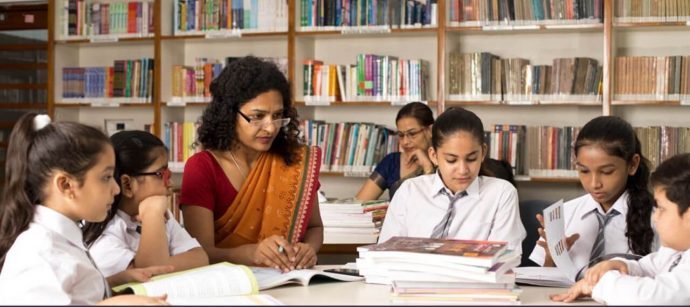
SHADOW education supplementing formal education for better development of students.
Informal learning is referred to as “SHADOW education.” It is intended to support formal education. It is a worldwide trend that has been growing as more applicants take entrance examinations and tough national, regional, and international exams in order to get into prestigious universities and decent jobs.
A third model of learning emerged as a result of COVID-19, which gave shadow education a new dimension in the form of virtual lessons and tutoring. This model uses technology to make shadow education more needs-based, self-paced, and individualised. In addition to providing educated youngsters with an additional earning outlet and alternative career route, shadow education also presents a possible revenue stream for educational institutions.
Although this type of informal learning has gained acceptance, its effectiveness and drawbacks are not widely discussed. Shadow education and “tuitions,” which are run outside of school hours, for extra money, and in private venues, are traditionally used interchangeably. Summer camps, after-hours classes, and preparing for competitive and institutional entrance exams are just a few examples of the various learning activities that make up shadow education. Addressing students’ inadequacies in specific courses is the main goal, and it comes at an extra expense.
Because of its high cost, only the wealthy can afford it; many others cannot. Rich people’s children have more options for higher education and employment thanks to shadow education. Access to shadow schooling based on wealth highlights the gap between “privileged” and “underprivileged” students.
The bigger social consequence is that education becomes more of a commodity and the educational system is more susceptible to learning disparities. The use of shadow education is another indication that schools might not be meeting parents’ requests for their children’s education. Additionally, students in shadow education settings fare better than those who simply attend school, and teachers there are more receptive to the needs of their students than they might be in traditional classroom settings. Therefore, even though shadow schooling just widens the divide between it and formal education, there is a certain amount of parental trust attached to it.
Another point to consider is that children incur costs as a result of being exposed to both formal and informal learning environments. Their intellectual and social potential may suffer if they are placed in a controlled environment, whether it be formal or informal. In both settings, students in Pakistan are likely to be part of a condensed learning canvas with uniform content and pedagogy that undermines real learning and just gets them ready for tests and exams.
Genuine curiosity on the side of students and a dedicated teaching style by their teachers are the main drivers of effective learning, which takes place in a larger and more varied social ecology. After a long day at school, children in shadow education environments may suffer from burnout and start to view learning as a chore rather than a chance to be curious and explore. Despite their bookish appearance, they are unable to apply what they have learnt to problems in the actual world.
Despite the benefits of shadow schooling, we should consider if our kids actually need more time to study if they already spend a significant portion of the day in school. And whether this is really an additional load or if it enhances their learning. What impact does it have on their social life and interactions with friends, family, and the wider community?
In order to stop the overcommodification of education and the exploitation of families, it might be time to track the costs of shadow schooling, not merely in monetary terms.
In an attempt to solve the problem of out-of-school children, the government may use shadow education by providing free or inexpensive tutoring programs for this group of students, who typically come from low-income households. This would support fair access to learning opportunities. For this very reason, eligible and qualified young people in remote locations may be sought out.
The only way to rebuild society’s confidence in public education is to solve the shortcomings of the formal education system, which is a long-term solution. It is imperative to take steps like enhancing pedagogies, curricula, and assessment and evaluation procedures, but the primary challenge is changing how society views education and putting more emphasis on producing knowledgeable, accountable, and reliable human capital than test results.

Content writer, educationist, teacher, researcher, social media manager, and a SEO manager from lahore. She has been working as a freelance academic and non-academic writer for more than 20 years now. She has a passion to learn new things and has a knack for writing and she combines both things to produce write ups she pours her heart out in.

